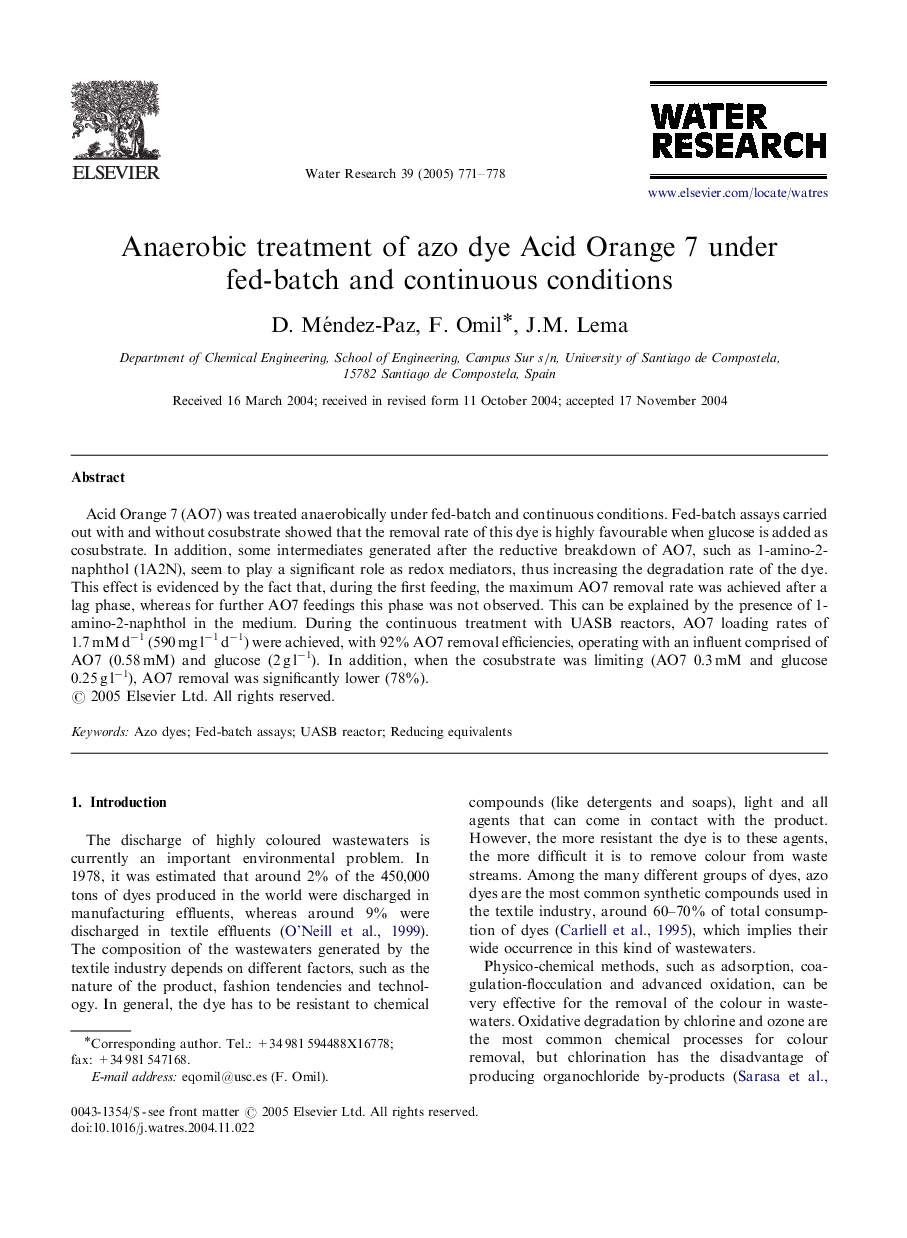| Article ID | Journal | Published Year | Pages | File Type |
|---|---|---|---|---|
| 9468282 | Water Research | 2005 | 8 Pages |
Abstract
Acid Orange 7 (AO7) was treated anaerobically under fed-batch and continuous conditions. Fed-batch assays carried out with and without cosubstrate showed that the removal rate of this dye is highly favourable when glucose is added as cosubstrate. In addition, some intermediates generated after the reductive breakdown of AO7, such as 1-amino-2-naphthol (1A2N), seem to play a significant role as redox mediators, thus increasing the degradation rate of the dye. This effect is evidenced by the fact that, during the first feeding, the maximum AO7 removal rate was achieved after a lag phase, whereas for further AO7 feedings this phase was not observed. This can be explained by the presence of 1-amino-2-naphthol in the medium. During the continuous treatment with UASB reactors, AO7 loading rates of 1.7 mM dâ1 (590 mg lâ1 dâ1) were achieved, with 92% AO7 removal efficiencies, operating with an influent comprised of AO7 (0.58 mM) and glucose (2 g lâ1). In addition, when the cosubstrate was limiting (AO7 0.3 mM and glucose 0.25 g lâ1), AO7 removal was significantly lower (78%).
Related Topics
Physical Sciences and Engineering
Earth and Planetary Sciences
Earth-Surface Processes
Authors
D. Méndez-Paz, F. Omil, J.M. Lema,
